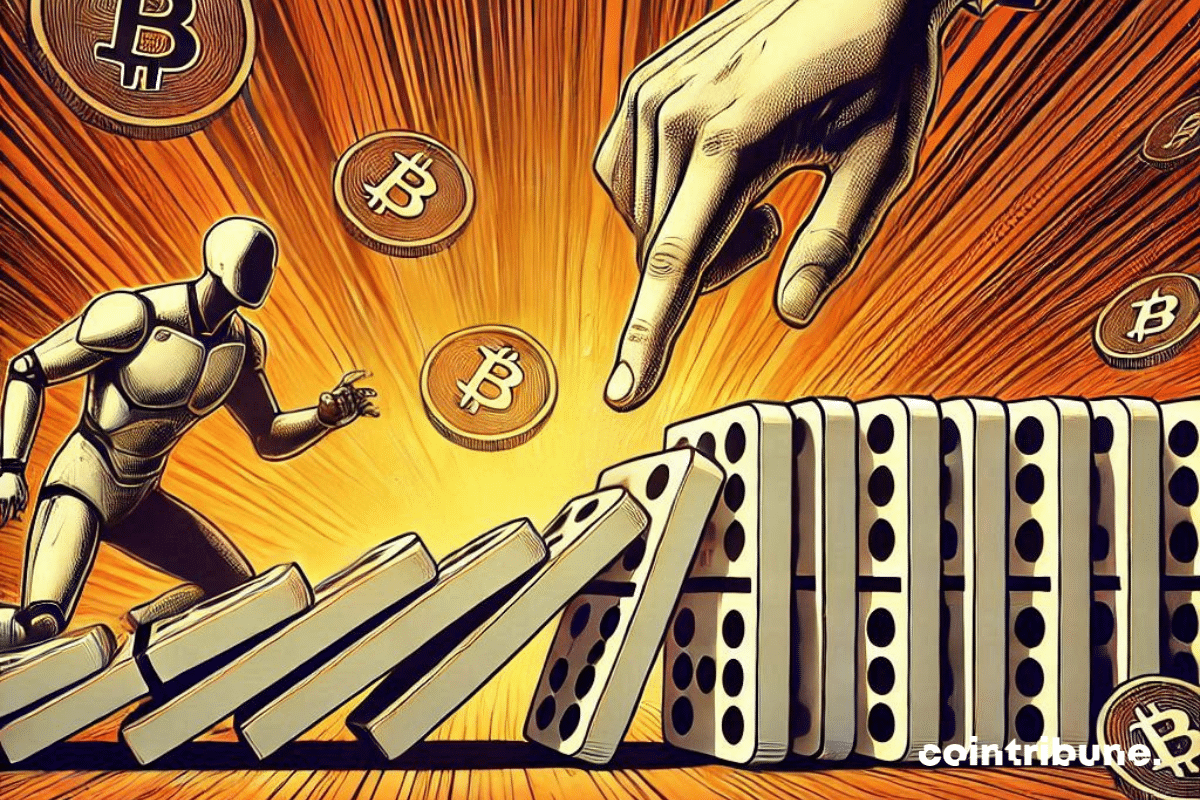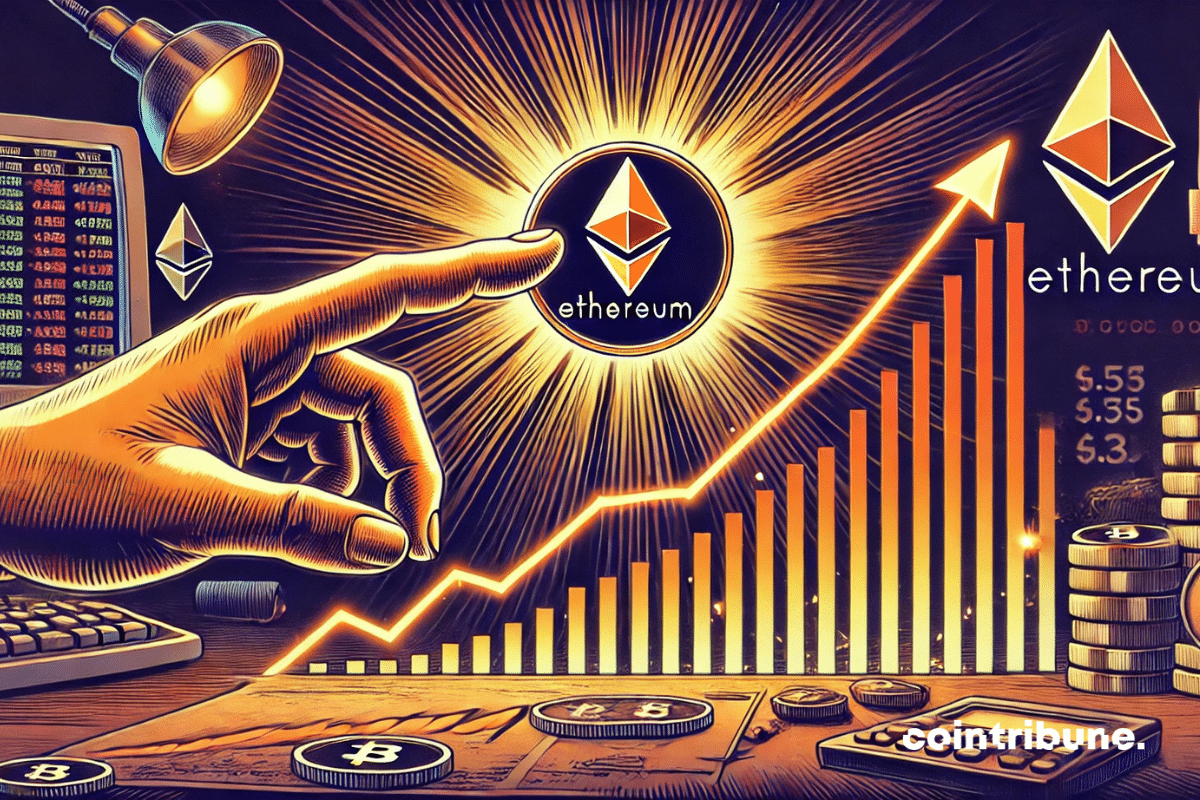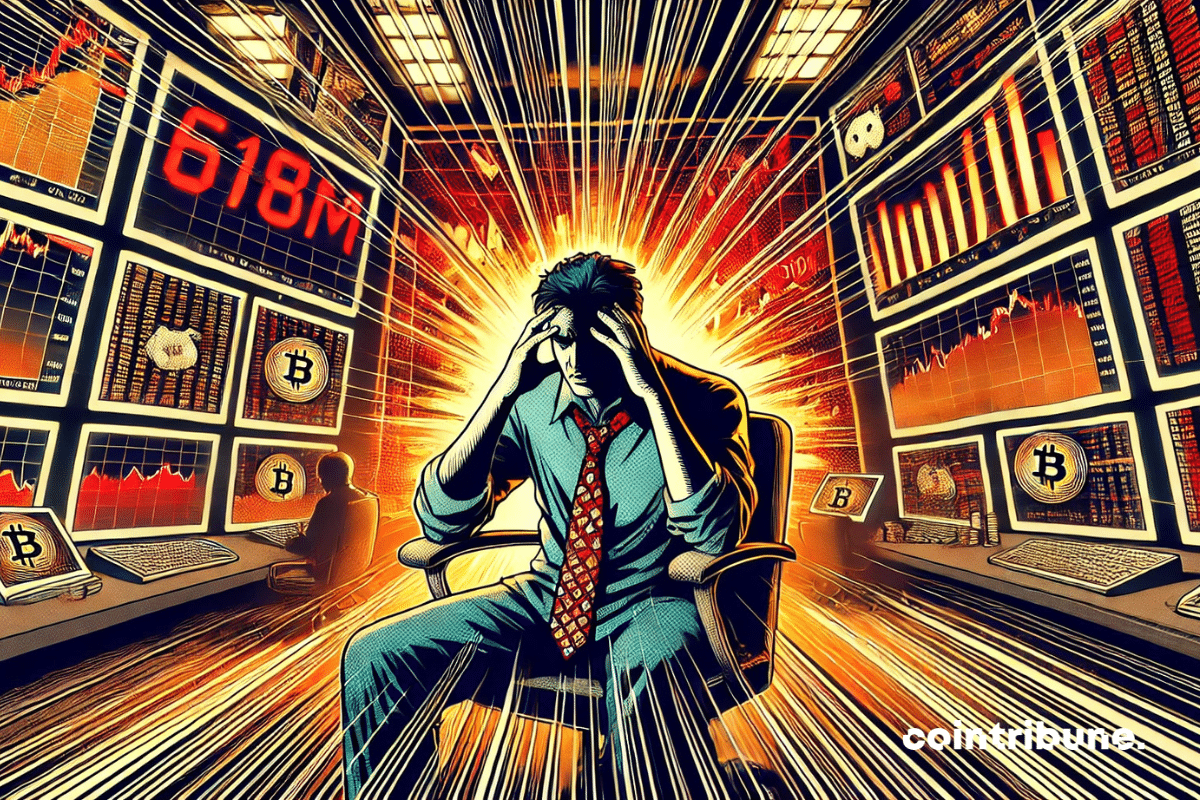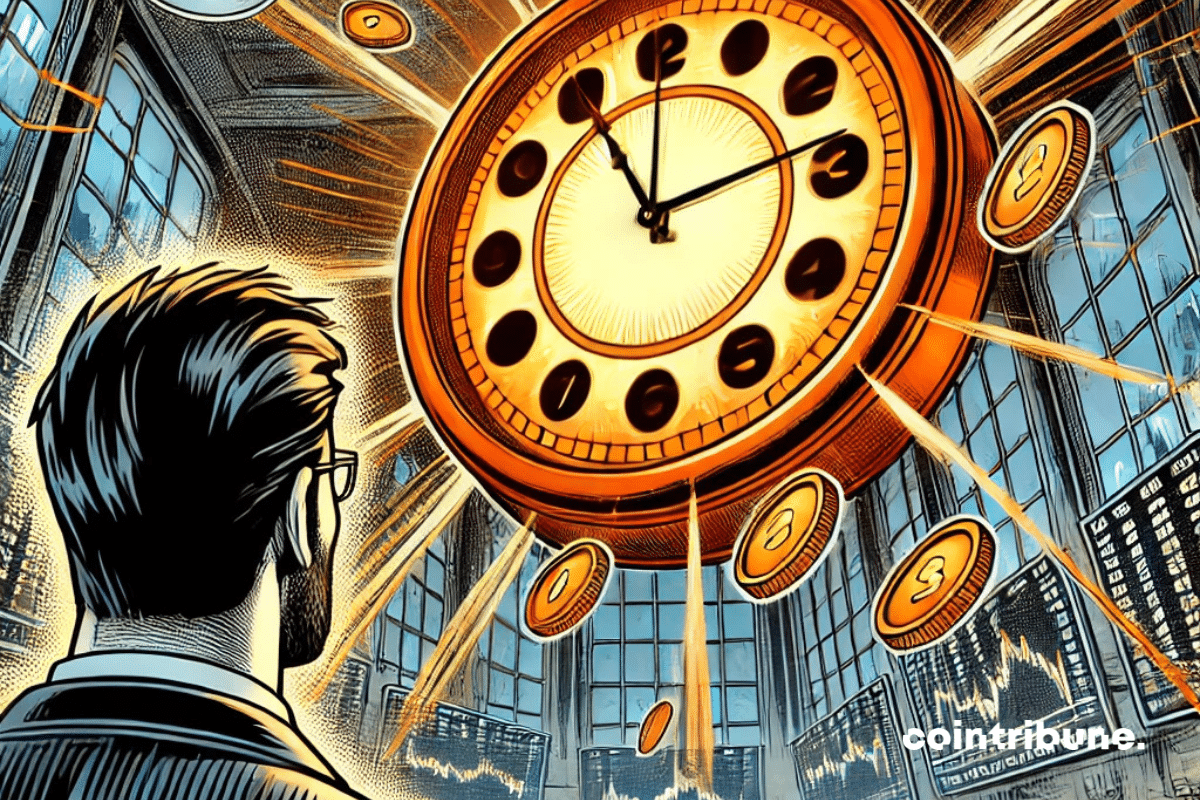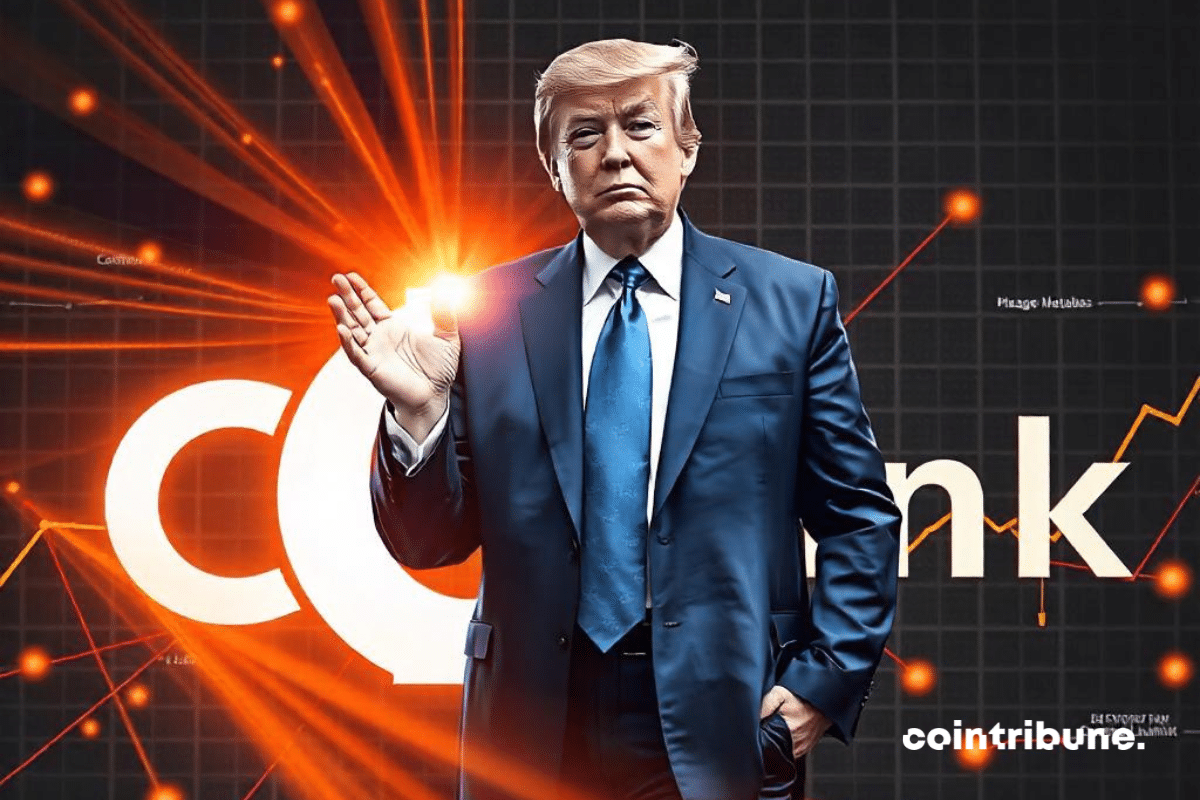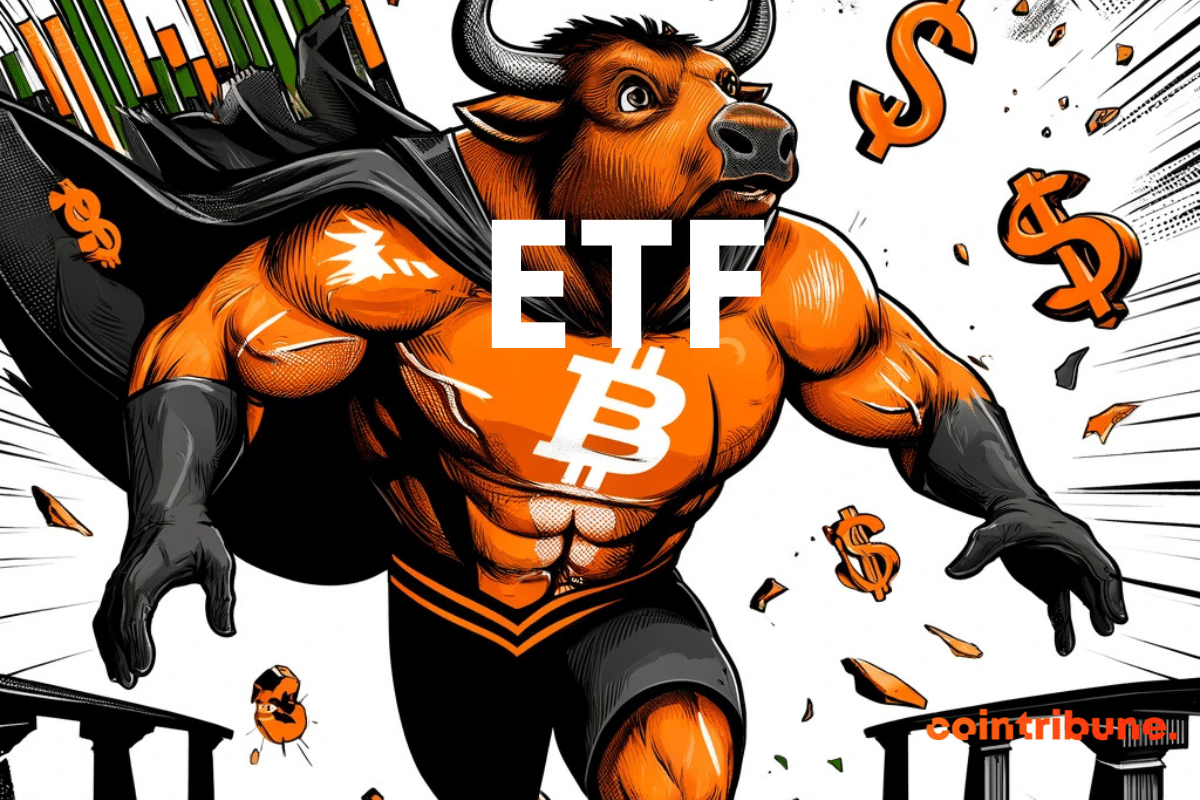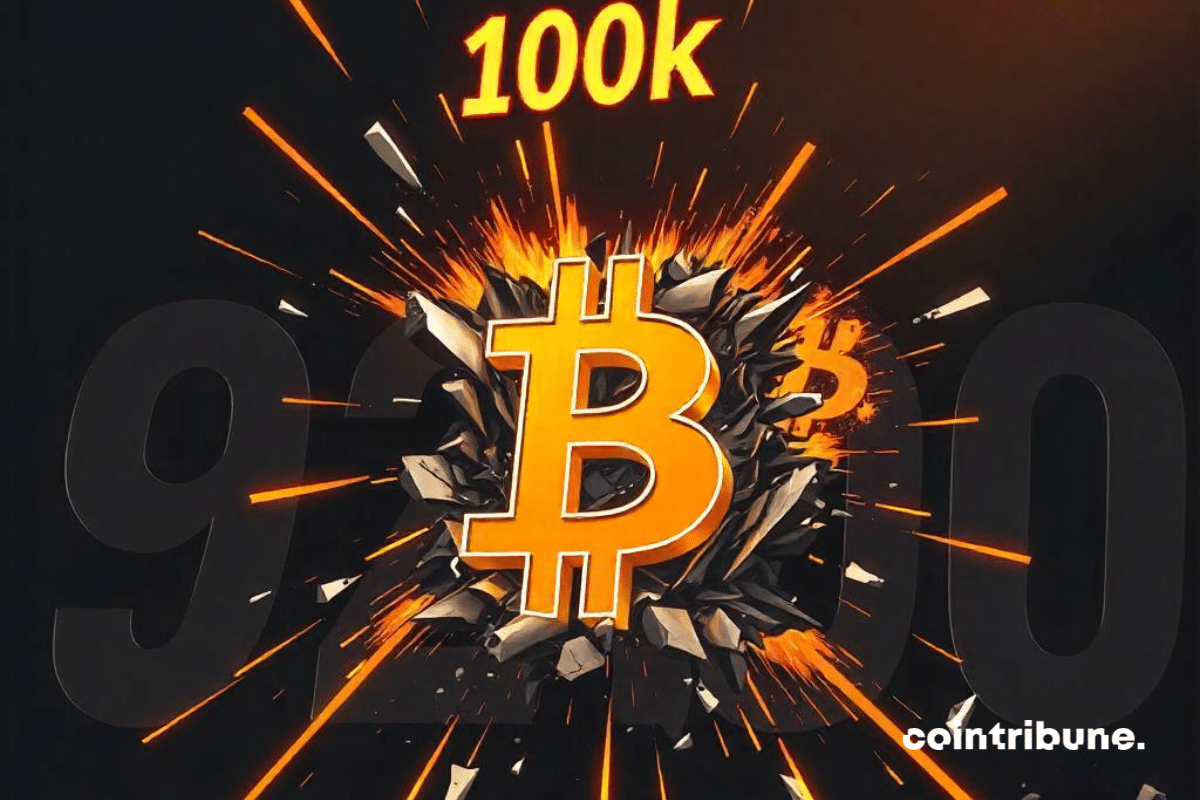Nokia, the Finnish telecommunications giant, is heading towards a new digital era with a patent dedicated to the encryption of digital resources. This project could mark a significant advancement in securing crypto assets and blockchain technology.
Cryptoasset
The last two weeks of December were tumultuous for the crypto market, marked by a significant drop in prices. However, Chainlink (LINK) could potentially become one of the big winners in 2025, with an anticipated increase of 160%. When could this rebound occur and what factors support it?
When the longs break, a billion fades away. Bitcoin wavers, but dreamers still hope for their Christmas miracle.
The Trump breath promises mirages in crypto, warns Hayes. Collective illusion or thrill of truth? January is shaping up to be fierce for Bitcoin.
Bybit, the crypto exchange platform, announces the cessation of its withdrawal and custody services for French users starting January 8, 2025. This decision comes as regulatory pressures intensify in the country.
Mark Longo, owner of Peanut the Squirrel, has launched an offensive against Binance, accusing the crypto platform of unauthorized use of his trademark to promote the memecoin PNUT.
The crypto market is buzzing again with optimistic forecasts for Ethereum. While Bitcoin recently reached historical highs, analysts predict that Ether could follow suit and break new records as early as the first quarter of 2025.
The Polygon community is preparing for a decisive vote on a liquidity proposal that could transform the future of the crypto ecosystem. With an estimated annual revenue generation potential of 91 million dollars, this strategic initiative could mark a significant turning point for the network.
Donald Trump is contemplating giving Brian Quintenz, former CFTC commissioner and current crypto lead at Andreessen Horowitz, a key role in crypto regulation.
The American exchange Coinbase takes a new step in the democratization of crypto assets by integrating Apple Pay as a payment method in third-party applications. This significant advancement now allows users to buy cryptocurrencies directly from their favorite apps.
Crypto entrepreneurs are making a significant impact in the prestigious Forbes list of young financial talent. Out of the 30 available spots in the finance category of "30 Under 30" 2025, nine are occupied by founders of crypto companies.
The recent euphoria surrounding XRP could quickly turn into disillusionment for optimistic investors. As the cryptocurrency's price has dropped by 18% from its annual high, an expert warns of a possible "bloodbath" if Bitcoin's dominance were to increase in the market.
The crypto market is going through a turbulent period marked by record liquidations of 618 million dollars over 24 hours. Michael van de Poppe, founder of MN Capital and a recognized analyst, warns of a possible flash crash, while paradoxically seeing it as an investment opportunity.
After the historic approval of spot Bitcoin ETFs, the crypto market may soon welcome a new major investment product. WisdomTree, Bitwise, and Canary Capital have filed applications to launch a spot XRP ETF, as Ripple's native token has seen a spectacular rise of over 400% in the past month.
With XRP soaring, Ethereum galloping, and the Fed squawking, the week promises to be as unpredictable as a night market. Watch out for the jolts!
The leading American crypto exchange platform, Coinbase, announces the termination of its USDC Rewards program for users in the European Economic Area (EEA). This decision comes in the context of compliance with the new European MiCA (Markets in Crypto-Assets) regulation.
At the end of 2024, the crypto market is preparing to face a major event: the unlocking of tokens worth a total of 5.08 billion dollars. Among these unlockings, nearly 2 billion dollars correspond to "cliffs", scheduled massive releases that could significantly impact prices.
Crypto market data suggests a bullish momentum for Ether, with Bybit analysts anticipating a breakout above $4,000 before January 20, 2025. This projection is based on a significant increase in institutional interest and trading volumes.
In the face of Bitcoin's historic rise nearing $100,000, Trezor, a leader in crypto hardware wallets, is experiencing an unprecedented surge in sales. The manufacturer reports a spectacular 600% increase in its weekly sales.
Morocco, which banned cryptocurrencies in 2017, is preparing to reverse course with a bill aimed at legalizing and regulating all digital assets. This historic decision, announced by the governor of Bank Al-Maghrib, Abdellatif Jouahri, marks a major turning point in the kingdom's policy toward digital currencies.
As the end-of-year holidays approach, Ledger, the French leader in secure crypto wallets, makes a strong move with an exceptional Black Friday offer. The company is not only offering significant discounts on its range of wallets but also providing $70 in Bitcoin with the purchase of its latest model, the Ledger Flex.
Crypto analyst Ali Martinez identifies three technical signals suggesting a potential major increase in the price of Polygon (POL), despite an overall pessimistic market sentiment. This forecast comes as the token is already showing a 17% increase over the past month.
In the midst of the rising cryptocurrency market, a spectacular event marked the day of November 19, 2024: the sudden surge of Dogecoin (DOGE), driven by a global increase in Bitcoin and continued interest from investors. This skyrocketing not only captivated speculators but also caused significant losses for those who bet against the famous meme crypto. Between record liquidations and the ever-present shadow of Elon Musk, this situation crystallizes the stakes of speculation and influence in a constantly evolving market.
The Securities and Exchange Commission (SEC) is facing an unprecedented legal challenge as 18 U.S. states unite to denounce its aggressive policy towards the cryptocurrency industry. This historic lawsuit, led by Kentucky Attorney General Russell Coleman, marks a major escalation in the conflict between federal regulators and advocates for digital assets.
The World Liberty Financial crypto project, launched by Donald Trump, has just announced a strategic partnership with Chainlink for the integration of price oracles. This collaboration marks a significant step in the expansion of traditional DeFi, as the project relies on Ethereum's blockchain technology.
American crypto ETFs have experienced their first outflow since Donald Trump's electoral victory, marking a pause in the bullish trend. Both Bitcoin and Ethereum saw significant declines, with net outflows of $400.7 million for Bitcoin ETFs and $3.2 million for Ethereum ETFs.
Phantom, a major wallet provider for the Solana ecosystem, is facing a technical crisis following a faulty update of its iOS application that has caused many users to be disconnected. An emergency fix has been deployed, but the situation remains concerning for those who have lost their recovery phrases.
Bitcoin continues its spectacular rise, reaching a new historic peak of $92,559. This impressive performance comes as the leading cryptocurrency is already showing a 117% increase since the beginning of the year.
Bitcoin continues its historic trajectory this week by setting six new consecutive records, driven by an unprecedented wave of purchases. The queen of crypto has surpassed the threshold of $89,000, now exceeding the market capitalization of silver and the GDP of most countries including Spain.
The cryptocurrency market capitalization reaches unprecedented levels of 3.1 trillion dollars, now nearing the GDP of France. This meteoric rise, fueled by Bitcoin approaching 90,000 dollars, reshapes the contours of global finance and disrupts traditional economic hierarchies.


